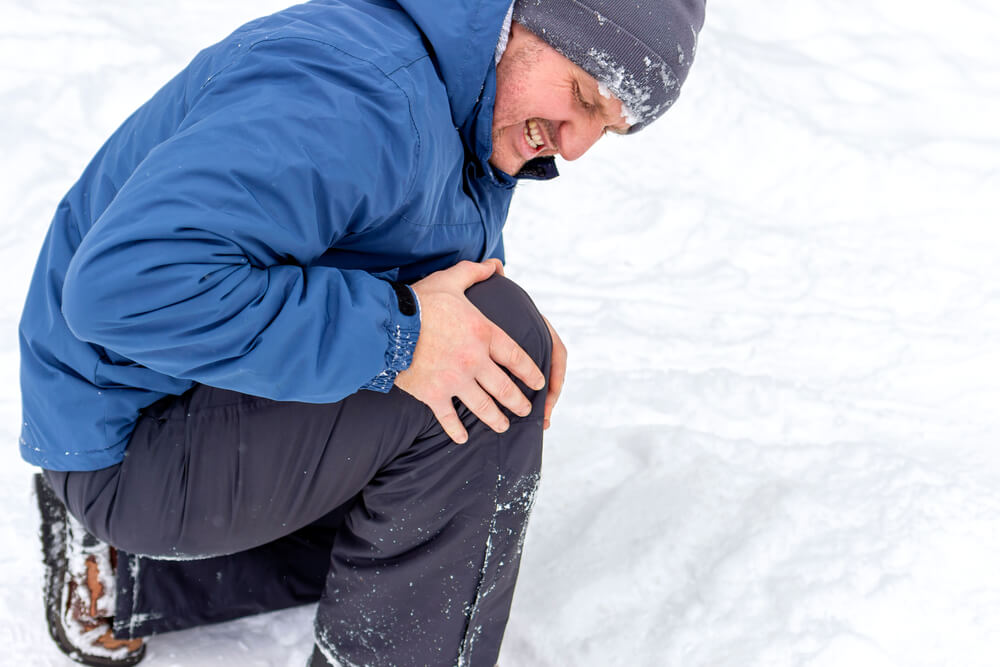Knee in pain when it’s cold out? Physical therapists say it could be caused by these 5 things

Just say the word “Wisconsin” to someone, and you’ll likely conjure up images of cold, snowy winters. This image may seem idyllic. Yet the 25% of adults who have frequent knee pain might not think so.
In many cases, knee pain may get worse when it’s cold out. You probably want to know why that is, especially if you find your knees becoming more painful as temperatures drop. Truthfully, medical professionals aren’t 100% sure why increased cold tends to trigger knee pain. However, physical therapists and other medical pros do have some theories about why knee pain occurs when it gets cold.
The top 5 reasons your knee may become more painful when it’s cold out:
- Plunging barometric pressure — You might think that barometric pressure is just something that you hear about on the weather report. But it may also be affecting your knees and other joints. Your knee has lubricating fluid in it, much like a water balloon.
If you (figuratively) took that water balloon and carefully put pressure on it, you could cause it to change shape. Barometric pressure acts just like your hands pressing on a water balloon to your joints. When the pressure drops as it gets cold, it allows the joint fluid to expand. This can trigger nerve irritation and joint stiffness that turns into pain.
- Joint fluid thickening — Let’s stick to our water balloon analogy for a moment. Think about what would happen if you gradually cooled the water inside the balloon. It would get thicker and thicker until it finally froze solid. The same process happens with the lubricating fluid in your knees and other joints when it gets cold. And thicker joint fluid can make moving your knees more difficult and painful.
- Nerve sensitivity — Did you know that your nerves could be the reason for your knee pain when it’s cold? A previous knee injury can have some odd effects on your nerves. For one thing, it can make them more sensitive to future pain. As a result, you may find that your knee aches when it’s cold when it didn’t before you hurt it.
- Moving around less — Most of us don’t want to move around as much in the winter. We want to sit by a warm fire with a steaming cup of cocoa. However, this impulse to stay stationary could be the source of your knee pain when it’s colder out. You see, moving your knee helps pump lubricating fluid through the joint. Less movement equals less lubrication in parts of your knee. And less lubrication can cause things to rub together and trigger pain.
- Having a chronic knee issue — Knee osteoarthritis sufferers may be more likely to develop knee pain when it’s cold out. Their affected knee may already be stiff and achy. Factors like the four we’ve discussed so far can cause these symptoms to worsen.
Fortunately, a physical therapist can help osteoarthritis sufferers and others combat knee pain when it’s cold out.
Franklin Rehab offers effective treatment options for knee pain in all types of weather
Knees becoming more painful as it gets cold out? You can find help at our Franklin Rehabilitation physical therapy clinic. Our clinicians can do a free screening to pinpoint the likely cause of your knee pain. They can then take this information and use it to build you an individualized treatment plan designed to:
- Reduce pain.
- Improve joint flexibility.
- Improve your ability to walk around.
Contact our team today for more information about our knee pain treatment services or to schedule your initial appointment.
